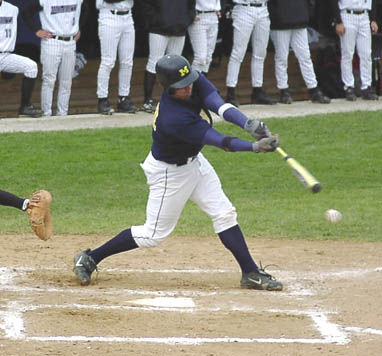

 |
CATCHER'S TIP #2: |
 |
| Question: "You have the hitter 0-2, what should you do and what should you not do in this situation?" "What should you be thinking?" There are common mistakes that many coaches, catchers, and pitchers make. Do you know what to do?" Successful catchers understand (instinctively) what pitch or pitch options they have to throw when getting a batter to a specific count
during an at-bat. What you throw to “get ahead,” what to throw “when behind,” and most importantly, what to throw to “get the out.”
This month’s “TIP” will focus on the
finishing off the batter when you have them 0-2.. With the 0-2 count, the pitcher should have the hitter in a position to literally “hit out of their hand.” Pitchers who can consistently get hitters in the 0-2 ball-strike count are going to “win.” Now is the time to get the hitter to swing at a bad pitch since they are just trying to protect the plate, and are very subject to swinging at a pitch out of the strike zone. |
UNDERSTANDING PITCH COUNTS AND THE APPROACH TO
|
The catcher (and pitcher) should understand that at no time should the 0-2 pitch enter the area of the strike zone so
that the hitter can make good contact with the ball. At the same time the pitch should not be a total wasted pitch that the hitter would never swing
at due to the fact that the ball is so far out of the strike zone. |
 |
The Los Angeles Dodgers conducted some research to determine how Major League hitters performed when they were at a certain “count” during their at-bats. The chart below shows the enormous difference between a 0-2 count and a 2-0 count. |
|
| Pitch Count | Batting Average |
| 0-2 | .130 |
| 2-0 | .390 |
|
|
“The Bottom Line” – As a catcher you must understand the importance of getting ahead of the batter and what to do (what pitch to throw) once you
are ahead in the count. When you get the batter to a 0-2 count, you shouldn’t completely “waste” a pitch that could potentially get the batter
out. You should attempt to get the batter to “chase” a “pitchers pitch” that is away from the “heart of the plate” and get the out without
having to throw several more pitches. |
For more information and a list of drills on proper throwing technique check out Chapter 6 in
“The View From Behind the Mask.”
**Purchase your copy at www.theviewfrombehindthemask.com**
www.gamerbaseball.com |
Email: gamersgetdirty@yahoo.com |